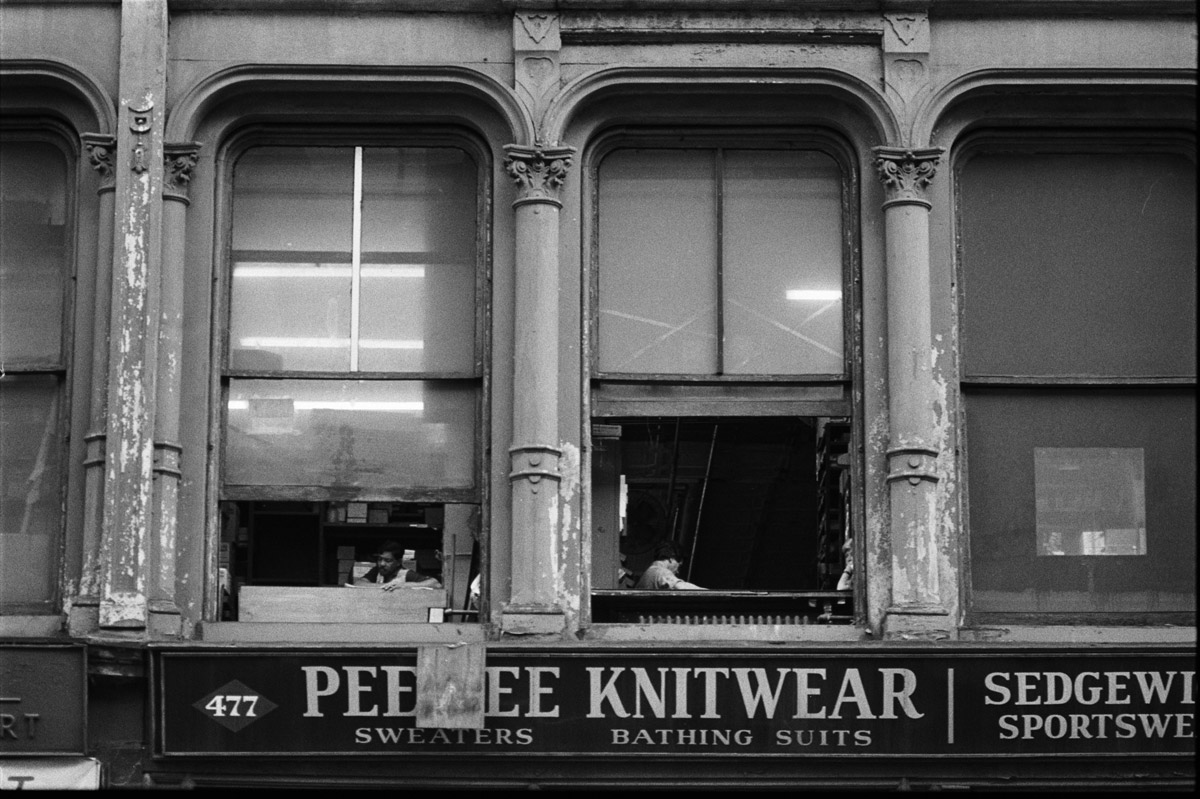There are worlds on both sides of our windows, looking out and looking in, separated by glass and usually a whole lot more. The same goes for doors. When closed, they keep us in, and keep others out. Sometimes they open and we can peer momentarily through the invisible wall in between.
From the mid-1980s until not that long ago, a man named Chris used to live in a vestibule at the back of the New Museum Building. I saw him from my second-floor window, at night when he was sleeping (in winter, under an always-bright-white duvet), and in the morning as he read a book or did a crossword puzzle. If I could see him, he must have seen me. When I was in high school, he saw me doing my homework. As an adult, he probably saw me cooking dinner.
This curated series of photographs looks in, out, and through SoHo windows and doors to examine a bygone era whose traces still remain today.
Windows: Looking In
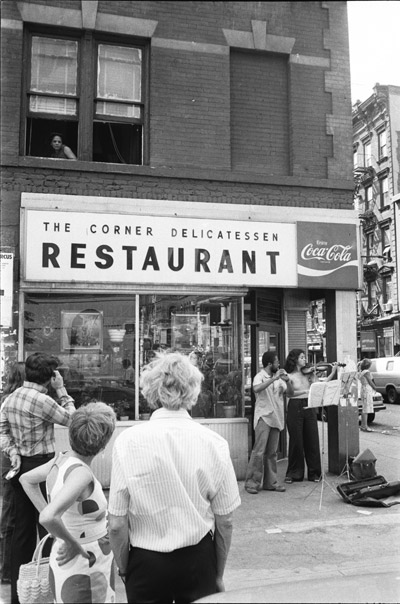
There is a lot going on in this fabulous photograph by Tony Marshall. As Laurie Marshall, Tony’s wife writes:
The ‘Corner Deli and Restaurant’ was at the corner of Prince Street and West Broadway. It was a typical SoHo scene with an informal music performance with a violin and flute taking place on the sidewalk. A small group of spectators has gathered, sharing the scene with the photographer and viewer. Note the woman listening at the window above. Tony loved to photograph people in windows. It was a sensitive acknowledgement of individual people living in NY. The personal private world and the public community. This photo is filled with special meaning – from the historical setting, to the appreciation of the music, to the audience, and especially the connection to the woman listening at the window.
The woman looks out, as the photographer looks in.
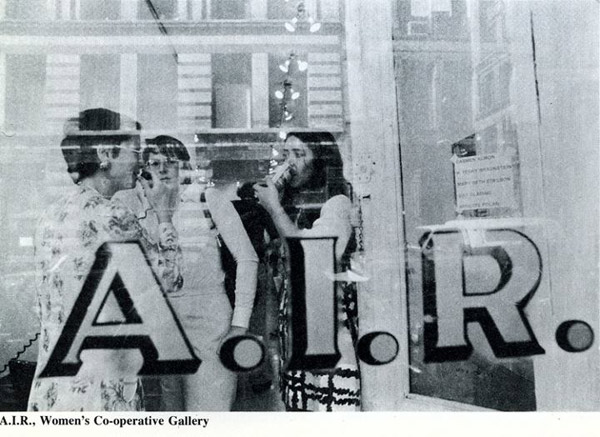
A.I.R. Gallery (Artists in Residence) is the first all female artists cooperative gallery in the United States. It was founded in 1972 with the objective of providing a professional and permanent exhibition space for women artists during a time in which the works shown at commercial galleries in New York City were almost exclusively by male artists. (source)
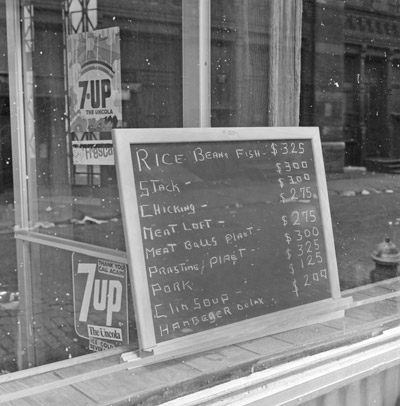
Photographer Jody Saslow explains the title of his photograph:
The couple who had run the Crosby Lunch for 35 years were retiring, and they gave the business to one of their workers, whose first language was Spanish. I must note that the photo was taken the first morning they re-opened, and by the end of the day customers had helped correct all of the spelling errors.
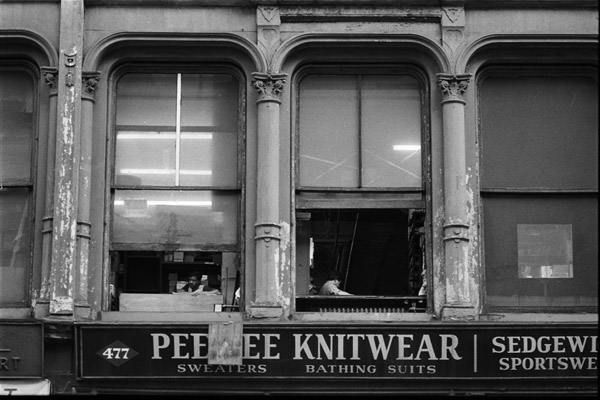
Laurie Marshall describes her husband’s photograph:
This is one of the many sweatshops that characterized SoHo – in cast iron buildings with extra-large windows. Again, Tony liked to photograph people in windows throughout the city as a lens into their lives. He appreciated the intimacy and his connection with the individual, contrasted to the outside city. He always had patience to look for and value an individual’s perspective.
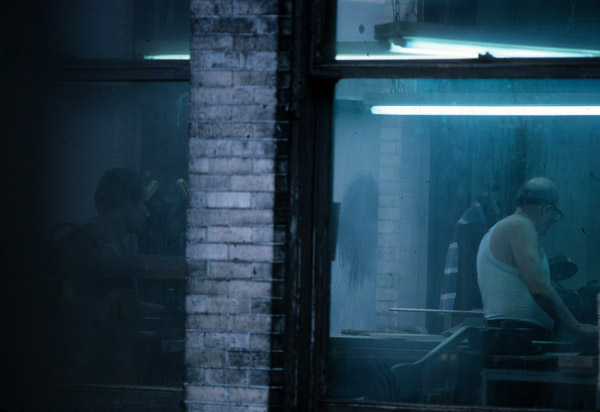
Robin Forbes was a photographer working in SoHo in the mid-1970s. He captured numerous images of street scenes, artists, studios, exhibition installations, lofts, people, performances, and businesses of the era, including several through the window of a factory. His SoHo photos are available through the Archives of American Art. (source)
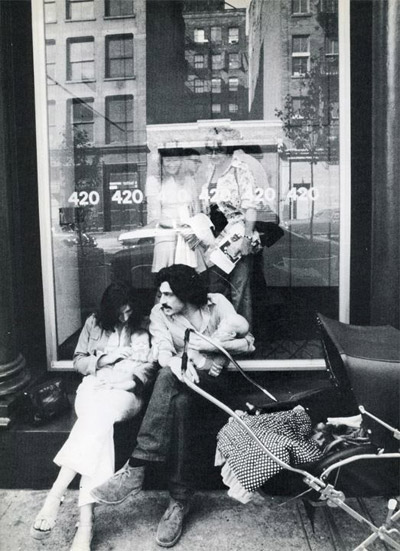
Arnold Newman shoots this photograph through the window of 420 West Broadway as two women look out the at a couple and their babies. 420 West Broadway was the center of the SoHo art gallery scene in the 1970’s and was home to major galleries including Leo Castelli Gallery, Sonnabend Gallery, and Andre Emmerich Gallery.
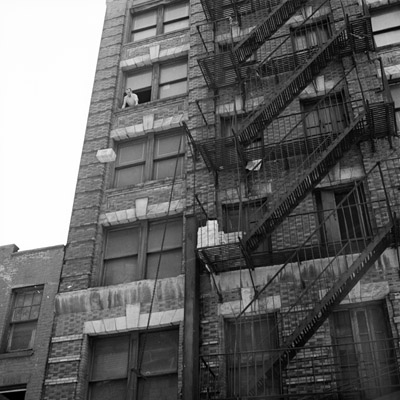
Jody Salow explained to me that it was often easier and faster for the workers in the Studium Corp. shipping department to throw their products out of the window, rather than use the elevator. Studium Corp. at 101 Crosby Street printed low-quality Spanish-language pornography.
Windows: Looking Out
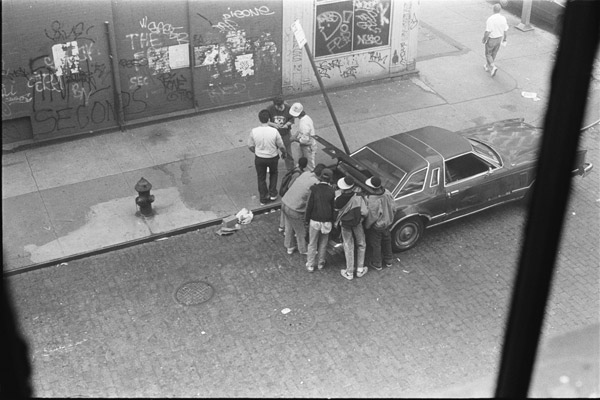
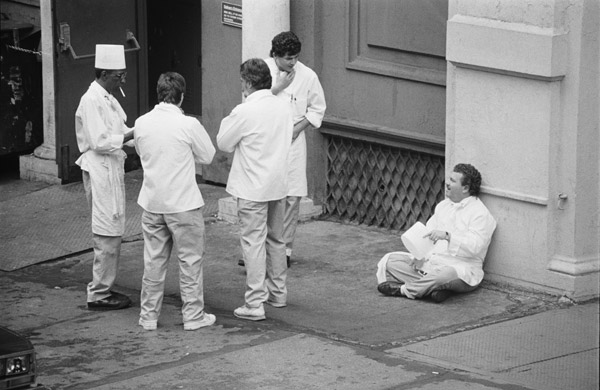
Laurie Marshall told me about the French windows in her loft that gave them a view of their entire block on Crosby and Grand:
Some of Tony’s SoHo photographs are his observations out our double French window. Drug-dealing, fire-work sales, drug arrests. They weren’t unusual. We could see the corner of Grand and Broadway from our western Crosby Street window and it was always a pretty sight to see the chefs in uniforms with hats from the French Culinary Institute out in groups in the sun on the sidewalk for their break. It was a frequent sight and spoke of one of the treasures that characterizes New York.
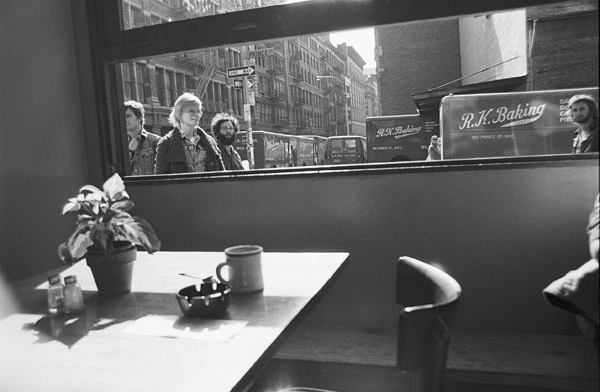
Lynne Pamela Kanter, author of Soho in the Seventies: New York’s Lost Bohemia, includes this shot taken through the window of the restaurant Food in her book. Food opened in late 1971 at 127 Prince Street at the corner of Wooster. It was a place that employed struggling SoHo artists and served inexpensive but hearty food to the local community, at least at first, until it was written up somewhere and became a destination spot for uptowners as well as out-of-towners. Through the window you can see delivery trucks for R.K. Baking, the industrial bakery across the street, whose products made the entire block smell so sweet.
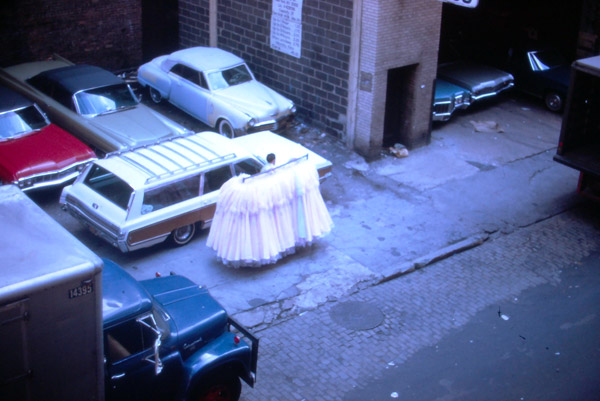
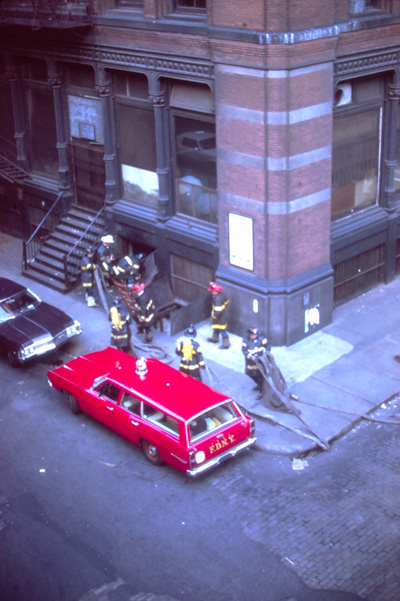
The two photographs above were taken by Arisitides Pappidas in the mid-1960s from his window above Fanelli’s, on the corner of Prince and Mercer streets. He describes the photos here:
Taken from and looking down on Mercer St. from our 3rd floor living space at 94 Prince. There are two buildings with that address; first is the bigger one whose main entrance is on Prince St. The second smaller building is entirely on Mercer. Jane and I had our living quarters in both buildings, built in the 1850’s, something previous owner Mike Fanelli, my landlord, told me.
Photo 1: Garment rack indicative of still flourishing light manufacturing of a business neighborhood.
Photo 2: Trash fire on steps leading to basement of large brick building that still had a dress factory going in an otherwise empty building. Firemen came from the firehouse on Mercer between W. Houston and Prince.
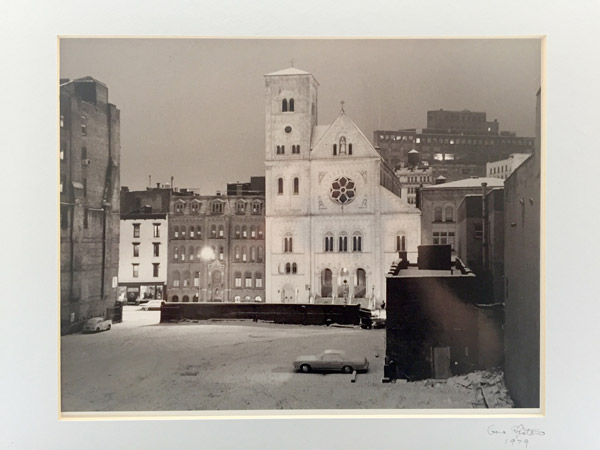
Susan Fortgang describes this photograph of St. Alphonsus Church on West Broadway, now the site of the SoHo Grand Hotel:
I took a digital picture of my original photo of the church by Gene Epstein in 1979 – taken from Wooster Street. There is a view of the lot and the buildings surrounding the church and a lot of detail. The building to the right of the Church was particularly beautiful. I believe these buildings were used for the nuns and the school. All gone now.
I live on the 2nd floor – my back windows faced the church. I don’t have a grandiose view in the back [anymore]. When I moved here, I saw the church. After the church was torn down, I had a view of the distant buildings. Then they built the SoHo Grand Hotel. Eventually they built the SoHo Mews in front of the Hotel.
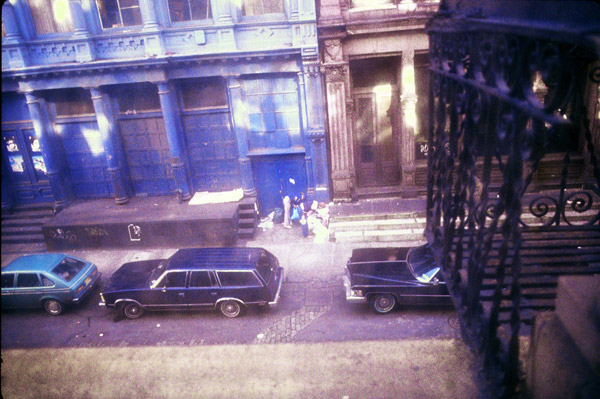
I find this photograph, taken by Susan Fortgang from her second-floor window on Greene Street, visually interesting. It not only captures what 1980s SoHo streets looked like, but also captures many shades of blue, the building, the two blue cars, the blue jacket of the person holding a blue plastic bag, that are complemented by the brown of the adjacent building.
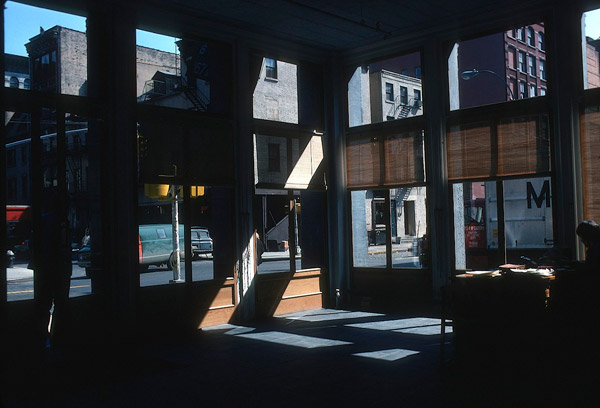
This photo was taken from inside 410 West Broadway looking diagonally across the street where you can see the Spring Street Bar, which was THE place to go after gallery openings to talk ART ART ART back in the day. The Spring Street Bar opened in January 1972, and, according to Anderson and Archer’s SoHo: The Essential Guide to Art and Life in Lower Manhattan, it was “the crossroads of West Broadway and on any given day or night you [were] likely to see Holly Solomon, Leo Castelli or Paula Cooper having lunch with clients or an artist or two.”
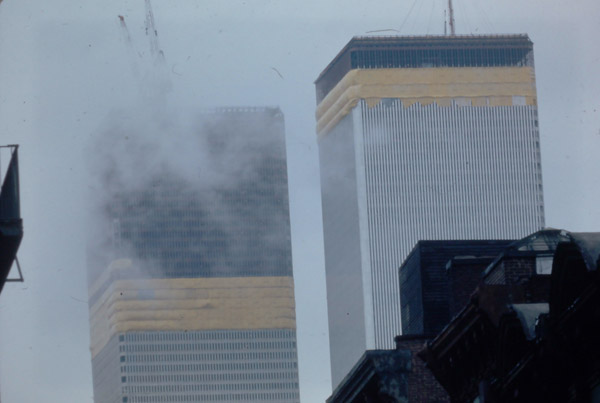
We’ve seen many photographs of the World Trade Center towers, and many more of the towers coming down. Here’s a shot of the towers going up in 1971.
Doorways: Looking Through
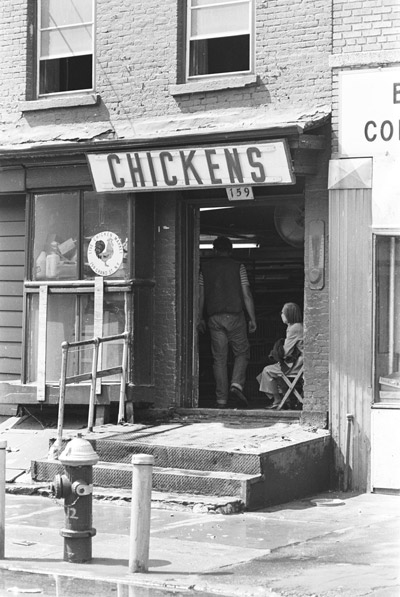
This wonderful photograph of a live chicken store on the edges of SoHo looks through the shop’s doorway at the back of a patron (or worker?), as someone looks out onto the street. Laurie Marshall remembers the shop:
The live chicken shop on Howard Street between Lafayette and Centre was a remnant of history in a changing neighborhood, where SoHo meets Little Italy, Chinatown, and the Lower East Side. It was unique and a little out of the ordinary. You could see cages with live chickens as you went by. In spite of the awful smell, it was pleasing in a way as a contrast to the large commercial ventures moving in along Broadway. SoHo was a mix of history and progress. Certainly, we all have fought to preserve the SoHo architecture and restrictions on building height. It’s sweet this little building has survived and is now a gallery!
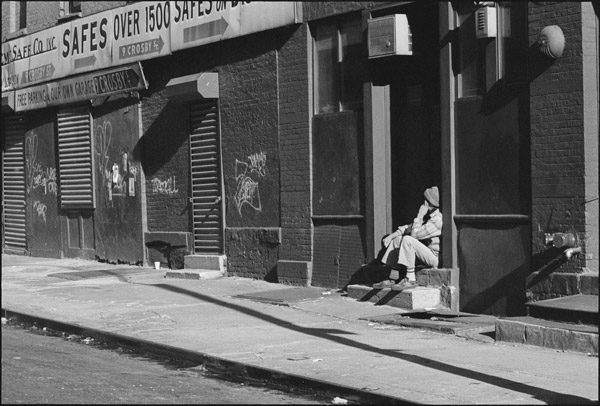
Laurie Marshall describes her husband’s photograph of the doorway to their building:
This is our building – 19 Crosby. It’s in 1984, but this is what it looked like until about 1990. The ground floor was artist Bob Grossman’s studio. The person is sitting on the steps to our front door. In the ’70s, 80s, and even 90’s there were only 8 families on our block. The other buildings housed at first sweatshops and brothels, much later into the ’90s, businesses and four more families. To this day there are only 11 residential units on Crosby below Grand, many the same residents for decades.
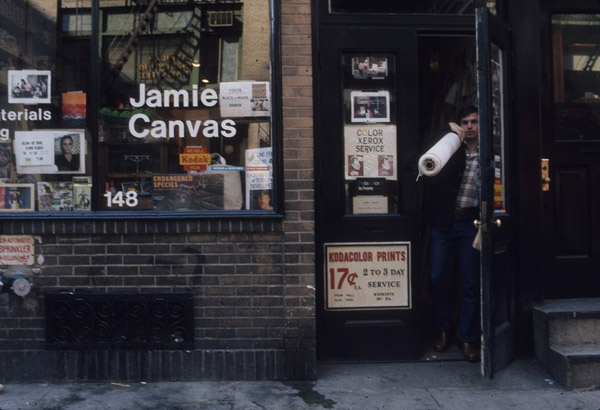
My father, when he was walking out the door, often used to say to me, “I need to go to Jamie Canvas,” or “I’m stopping at Jamie Canvas on my way home.” I always thought Jamie Canvas was a person, someone he was going to visit. But as many of you may remember, Jamie Canvas was an art supply store on Spring Street that sold, among other things, lots and lots of canvas. Named after owner Daniel Himmelfarb’s then girlfriend, Jamie, the store was a hub for local artists.
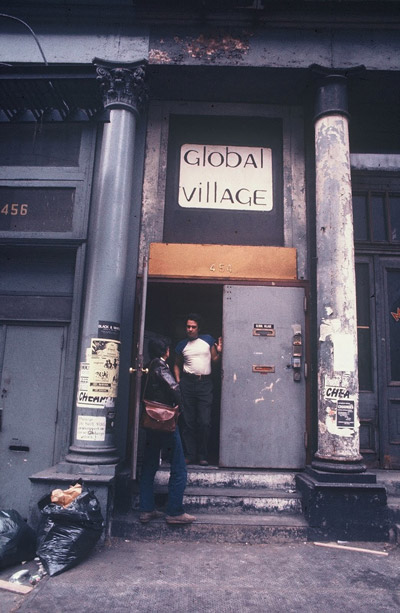
A conversation through the doorway of Global Village, a pioneering Manhattan-based media center that operated from the late 1960s to the 1980s. It produced and showcased “Guerrilla TV” style video documentaries that featured subject matter and stylistic qualities not seen on mainstream television of the period. (source)
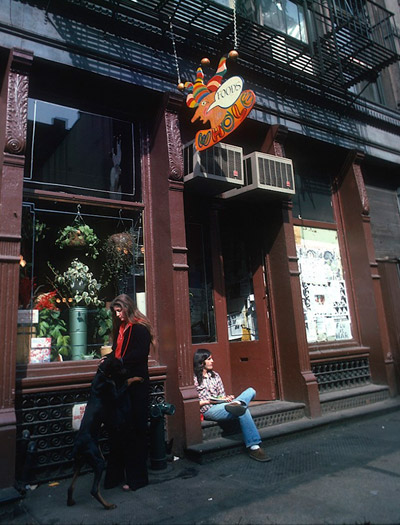
The plants hanging in the window and the community bulletin board seen through the door foreshadow what visitors to Whole Foods would find inside. The ORIGINAL Whole Foods on Prince Street (1970-2000) was a “health food” store of the old school. It was no Whole Foods Market or GNC, but it was the precursor to both. Whole foods as an industry was just starting to take off at that time so variety and choice were slightly limited by today’s standards, but if it was out there, Whole Foods carried it, from whole grain bread loaves that weighed ten pounds each to rennetless cheeses to, of course, Tofutti.
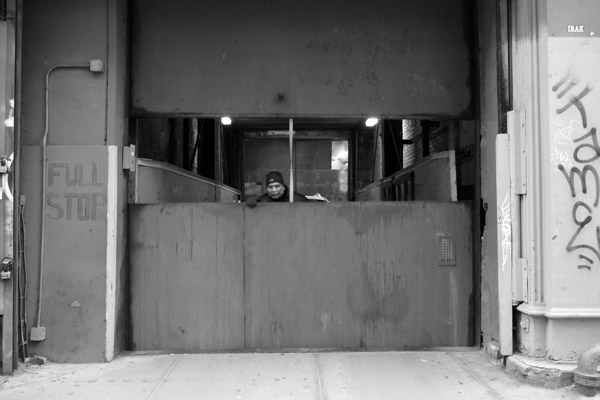
Growing up, I was always fascinated and impressed with the car elevator at Mercer Garage. An enormous version of the freight elevator I grew up with in my building, it ferried its automotive passengers up and down. A car would go in facing in and come out facing out.
Looking In, Out, and Through: The Barking Dog Museum
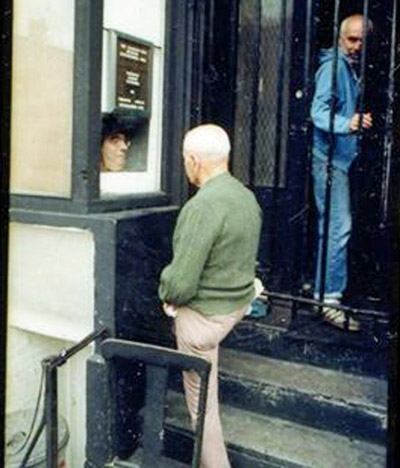
In the case of the Barking Dog Museum, there was lots of looking in, as well as looking out and through. Rick Parker, artist and illustrator, describes his “museum”:
In July of 1975 when I moved from Brooklyn to 46 Grand Street, I quickly realized I had a great location for showing my work to passersby and began doing what I called “assemblage” artworks composed of assorted found objects and exhibited these in the window of my storefront. By 1978, my dog, Homer, started to bark from inside my place on the other side of the frosted glass door at people who began to stop to look at my “exhibit.” My place, and the small window display, gradually became known as “The Barking Dog Museum.” I continued to display hundreds of my assemblages in this small window installation at street level from 1975-1987.
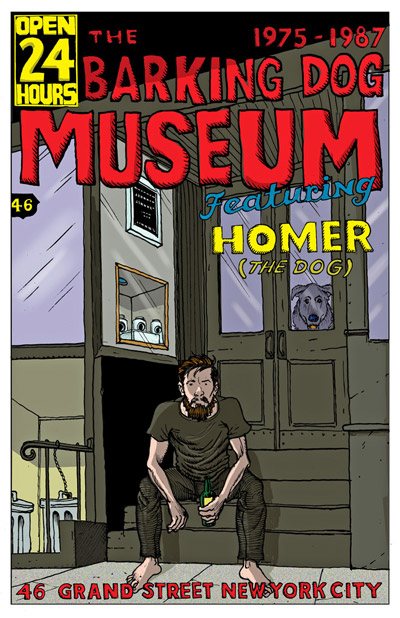
Rick Parker describes the museum’s construction:
I found an old wooden milk crate, cut pieces of sheetrock to line the interior and painted the inside white. I turned the opening around to face outward through the glass window, cut a small hole in the top and sat a small lamp on top so that it was illuminated at night. The streets were still dark in those days. People could easily see it as they walked by on the sidewalk or stop and step up one or two steps to take a closer look.
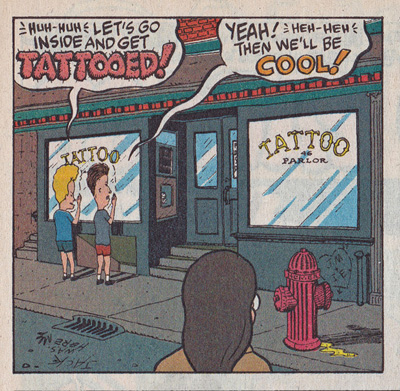
A postscript from Rick:
A little-known esoteric fact: Although my space is currently a laundry, I used my studio at 46 Grand Street as the setting for the Tattoo Parlor Scene in Beavis and Butt-Head Comic Book Issue #4 May 1994. Check it out!!
Photographers featured in this story:
Robin Forbes
Susan Fortgang
Lynne Pamela Kanter
Arnold Newman
Tony Marshall (laurie@rashomonproductions.com )
Aristides Pappidas
Rick Parker
Jody Saslow (jsaslow@verizon.net )
Thornton Willis

